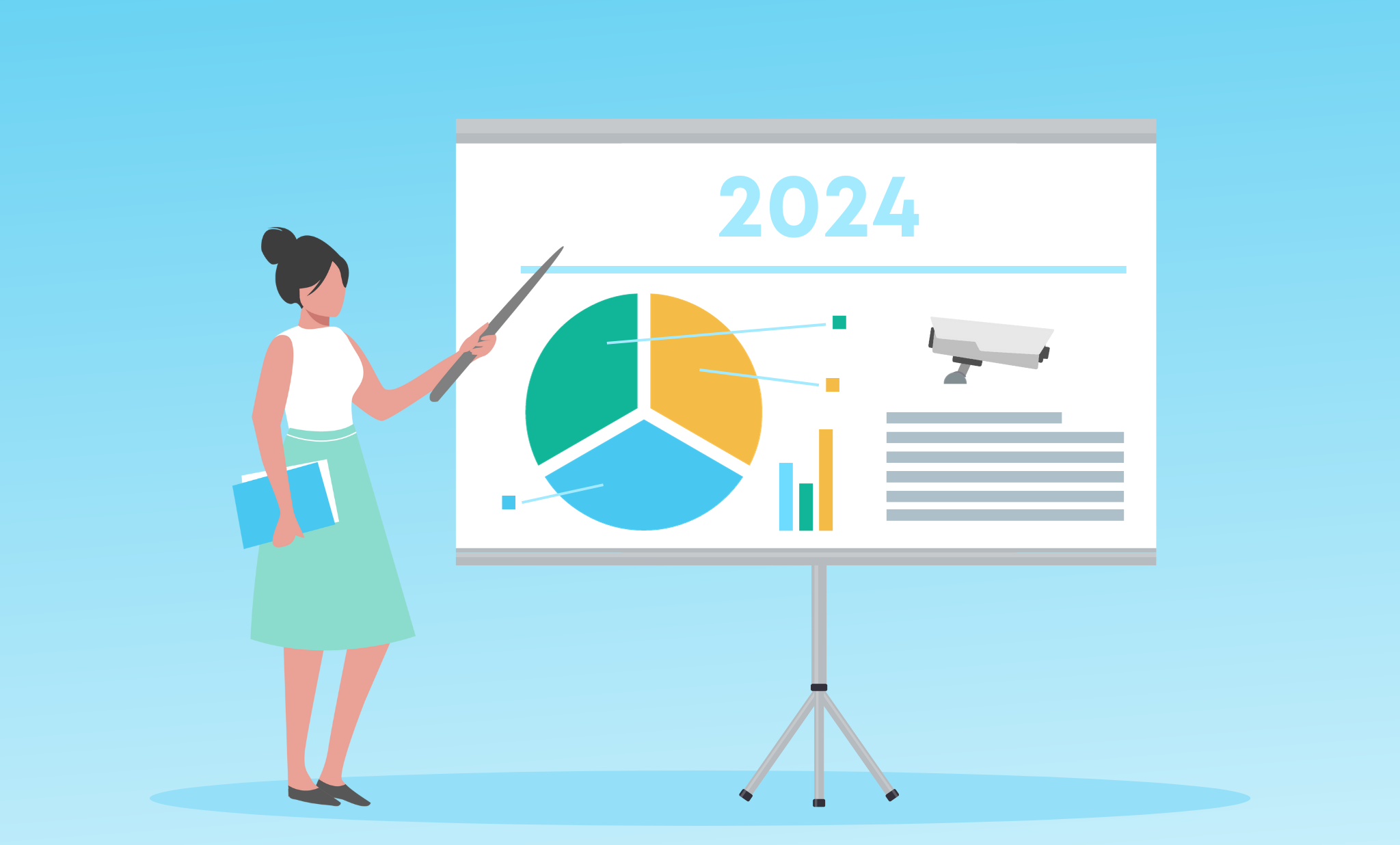
With 2024 just around the corner, there’s good reason to wonder how the field of physical security device management will change in the coming year.
As hard as it can be to predict the future accurately, the work that our team does with our customers continues to shed light on major trends in the ways organizations manage their physical security devices. In addition, this year’s 2023 trends report gave us a chance to deepen our understanding of what changes to expect in the future.
Based on our data and the lessons we’ve learned while working with a wide range of organizations, we’ve compiled a list of the five most important shifts in the world of physical security device management that we expect to see in the coming year.
Here’s a look at our top predictions for 2024.
1. Regulation will raise the bar, making comprehensive visibility crucial
Recent years have seen an increase in regulation stemming from concerns about cybersecurity, consumer privacy, and national security – including laws and regulations with significant implications for physical security. Perhaps the example that has garnered the most attention is Section 889 of the John S. McCain National Defense Authorization Act (NDAA), which created strong incentives for organizations to avoid using physical security devices produced by certain companies (or containing any components produced by those companies).
In 2024, we expect to see that trend have a significant impact on the management of physical security devices, especially in light of the U.S. National Cybersecurity Strategy document published earlier this year. Notably, that document highlighted the cybersecurity risks that can stem from IoT devices (a category that includes connected physical security devices). It specifically noted that “many of the IoT devices deployed today are not sufficiently protected against cybersecurity threats… Recent IoT vulnerabilities have shown just how easily bad actors can exploit these devices to construct botnets and conduct surveillance.”
As a result, we expect organizations to be forced to adapt rapidly to a dynamic legal landscape surrounding physical security. One major key to making that happen will be having truly comprehensive visibility into their physical security devices, providing organizations with the information they need in order to make sure they’re compliant with relevant laws.
2. Physical security teams will become more concerned about cybersecurity
Cybercrime continues to grow in scope, in sophistication, and in the havoc it can wreak. According to IBM’s Cost of a Data Breach Report 2023, the financial damage caused by the average data breach anywhere in the world has jumped 15% in just the last three years – and the U.S. has the world’s most expensive data breaches, with an average cost of $9.48 million. Meanwhile, hackers continue to get more sophisticated, bolstered by technological advances such as the development of artificial intelligence (AI).
In light of these ongoing trends, next year we expect to see growing awareness of the very real risk of cybercriminals hacking into physical security devices. We also expect organizations to become more aware of the need to harden and maintain their devices by taking steps such as upgrading firmware, rotating passwords, and managing certificates – as well as having comprehensive visibility and replacing old devices as needed.
3. Physical security teams will become more tech-savvy and self-sufficient
With connected devices becoming more advanced and playing a bigger role in organizations’ physical security, we are seeing physical security teams adapt by becoming increasingly tech-savvy. In 2024, we expect to see those teams reach new levels of high-tech sophistication, becoming more self-sufficient in their use of digital technologies.
That’s a hugely important adaptation, especially given how complex it is to manage today’s (and tomorrow’s) fleets of physical security devices. Because organizations generally get new devices more often than they retire old ones, their fleets of physical security devices keep growing – and so does the work involved in managing them. And because technological advances keep bringing new physical security devices to market, many teams need to manage both old and new devices simultaneously. Additionally, when mergers and acquisitions contribute to large and varied device fleets, they make managing those fleets an increasingly complicated goal.
4. Collaboration between IT and physical security teams will become even more important
It’s common for organizations to rely on physical security teams, IT teams, and other stakeholders to keep their physical security devices running reliably and securely. It’s critical for all those teams to work together effectively – and that requires both comprehensive visibility and smooth collaboration. With the right combination of visibility and collaboration, organizations can make sure each department has the information it needs to do its job, and that each ones knows when an issue should instead be handled by a different department.
In 2024, we expect to see that collaboration become more important, especially in light of the growing challenges surrounding the management of physical security devices. At the same time, we expect to see the line between physical security and cybersecurity become increasingly blurred, continuing a trend that we’ve seen over time. In part, that’s because of the risk of hackers (such as insiders) using physical means to carry out their attacks on-site. It’s also because of the risk of cyber-physical attacks, in which threat actors hack into physical infrastructure.
5. Automation and consolidation will take center stage
While the work involved in managing physical security devices is critically important, it is also time-consuming, unscalable, and costly. Due to the challenges involved in managing those devices, we have already seen that it’s common for organizations to manage them insufficiently – or not to manage them at all after they’ve been installed. Given all of the predictions laid out in this post, we expect it to become even more difficult to manually manage physical security devices in 2024 – even as the stakes continue to rise.
As a result, we predict that 2024 will see organizations become increasingly aware of the importance of automating the operational management of their physical security devices – continuing a crucial trend that we’ve already noticed.
But not all automation is created equal. With many organizations relying on multiple point solutions to automate the management of their physical security devices, next year we expect to see a growing awareness of the shortcomings of that kind of fragmented approach to automation. As that happens, we predict that organizations will increasingly see the importance of having a consolidated approach to device management – one that seamlessly combines comprehensive automation and visibility to optimally streamline the management of physical security devices.
Seeing the big picture
Taken together, our predictions for 2024 include reasons for both concern and optimism. We expect the challenge of managing physical security devices to grow, continuing a trend that we’ve already witnessed. At the same time, we expect the importance of managing physical security devices to increase, also continuing a current trend. Specifically, we expect to see increases both in regulation and in the cost, frequency, and sophistication of cyberattacks – all of which will make it more important for organizations to harden, maintain, and monitor their physical security devices.
The good news is that we also expect to see organizations adapt to all these risks in the coming year, helping themselves to stay safe while minimizing costly inefficiencies.
As the risk of cybercrime continues to grow, we predict that organizations will put more of an emphasis on the steps they need to take to protect their physical security devices from hackers. As it becomes increasingly important for their various teams to work together to manage their physical security devices, we expect to see physical security teams become increasingly tech-savvy and collaborate more with other departments. And as organizations become more aware of the need to automate the operational management of their physical security devices, we expect to see a major shift towards both automation and consolidation.
In other words, we expect 2024 to see the management of physical security devices become both more difficult and more important – but we also expect to see organizations become increasingly aware of that challenge and take major steps to address it.
For a closer look at how automation can help organizations ensure that their physical security devices run reliably – while also protecting them from cyber threats and cutting costs – check out The Guide to Automating Physical Security Device Management.




